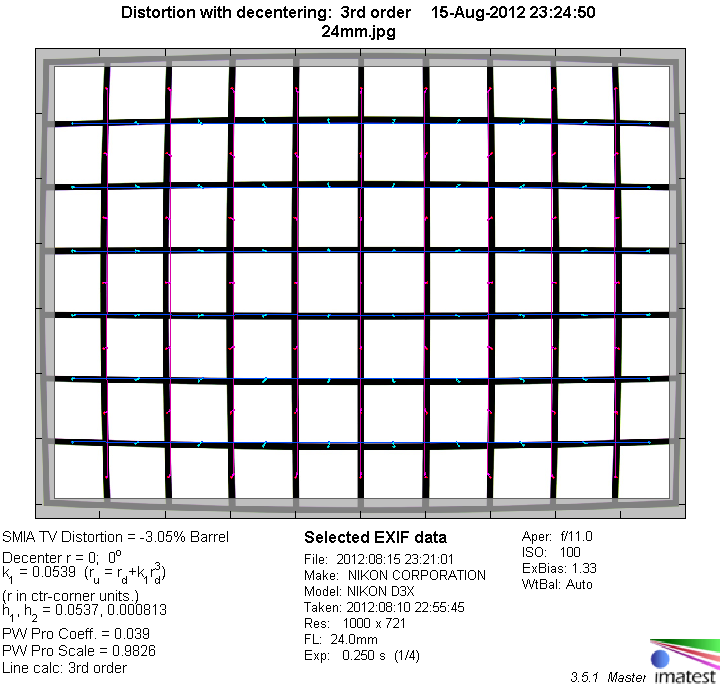|
Page 2 of 3

Distortion
The lens shows quite pronounced barrel distortion at the shortest zoom setting, which however is typical for many standard zooms and thus expected behaviour.
Zooming in, the character of the image distortion soon switches to the pincushion type. At 35mm, the amount is moderate, but increases significantly with longer focal lengths. At 85mm, the lens shows more distortion than what we're used to see from super-zooms.
The good news is that at any focal length distortions are uniform and can easily be corrected by software in post processing (at the expense of resolution and a little field of view, of course).
|
Move the mouse cursor over the focal length text marks below to observe the respective distortion
|
| 24mm |
35mm |
50mm |
85mm |
|

|
The chart above has a real-world size of about 120x80cm.
The two images below give an impression of the impact of high distortion on real world subjects.
24 mm:

80 mm:

Vignetting
The lens shows quite pronounced light fall-off towards the borders at large aperture settings, especially at the short end of the zoom range. As usual, stopping down helps to reduce the amount of vignetting. At f/8 the remaining darkening should not be an issue for most subjects anymore.
We're performing our vignetting analysis based on
(uncorrected) JPEGs straight from the camera. The JPG engine of the Nikon D3x features a rather flat
gradation curve, thus has a moderate contrast characteristic, resulting in comparatively low vignetting figures - the
corresponding Canon figures are roughly 40% higher due to the more
aggressive default contrast setting.

MTF (resolution)
The lens shows excellent resolution in the image center at most tested focal lengths and apertures. Only at its longest focal length the MTF figures decrease a little at the largest aperture setting, but recover to excellent levels by stopping down.
The image borders and corners perform on a lower level, especially at the shortest zoom setting. However, by stopping down it is possible to achieve good to very good resolution across the whole frame.
Please note that the MTF results are not directly comparable across the different systems!
Below is a simplified summary of the formal findings. The chart shows line widths
per picture height (LW/PH) which can be taken as a measure for sharpness.
If you want to know more about the MTF50 figures you may check out the corresponding
Imatest Explanations

Chromatic Aberrations (CAs)
Chromatic aberrations (color shadows at harsh contrast transitions) are rather high, reaching from slightly above 1.5 pixels at long focal lengths to more than 2.6 pixels at the shortest zoom setting.
However, CAs can easily be corrected in software or by the camera itself (most modern Nikon DSLRs remove CAs themselves if you shoot JPGs).

|